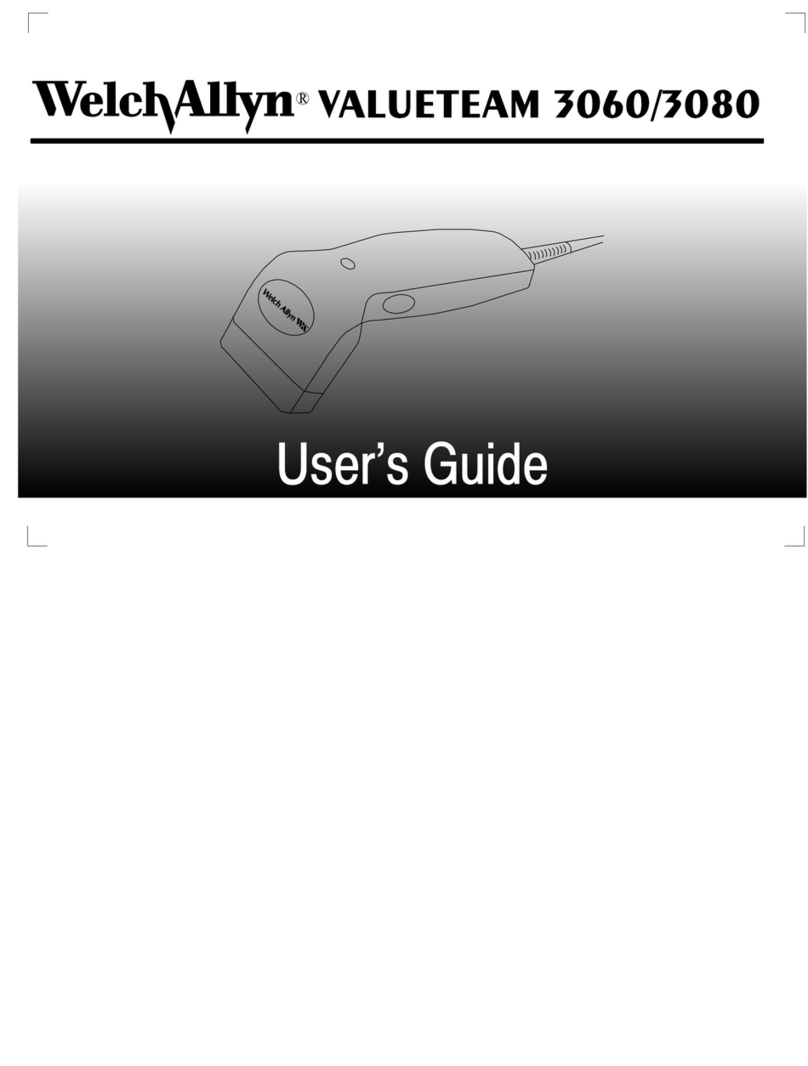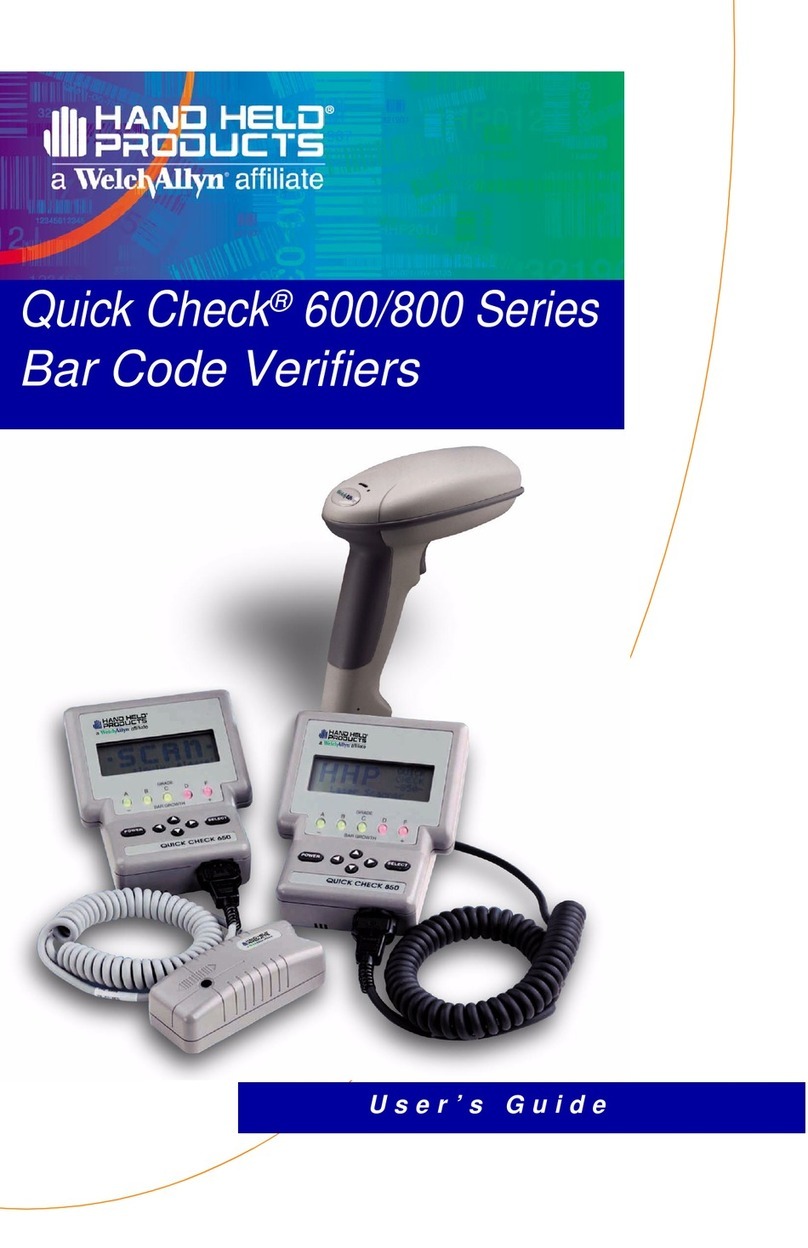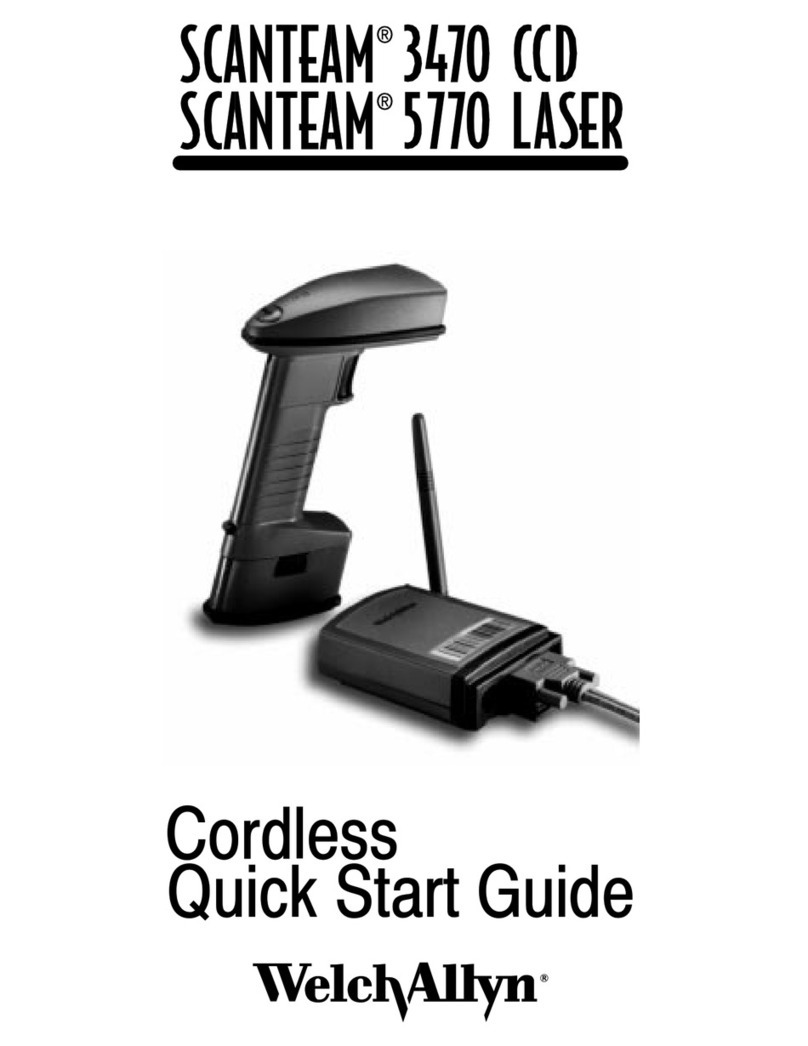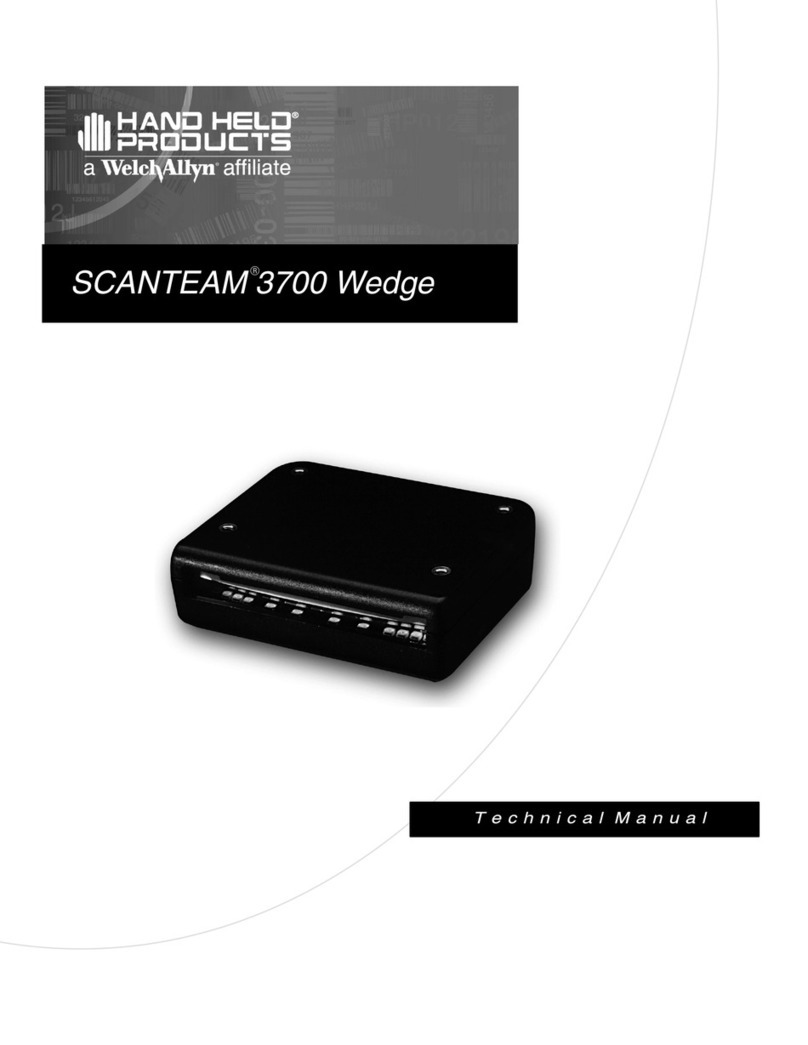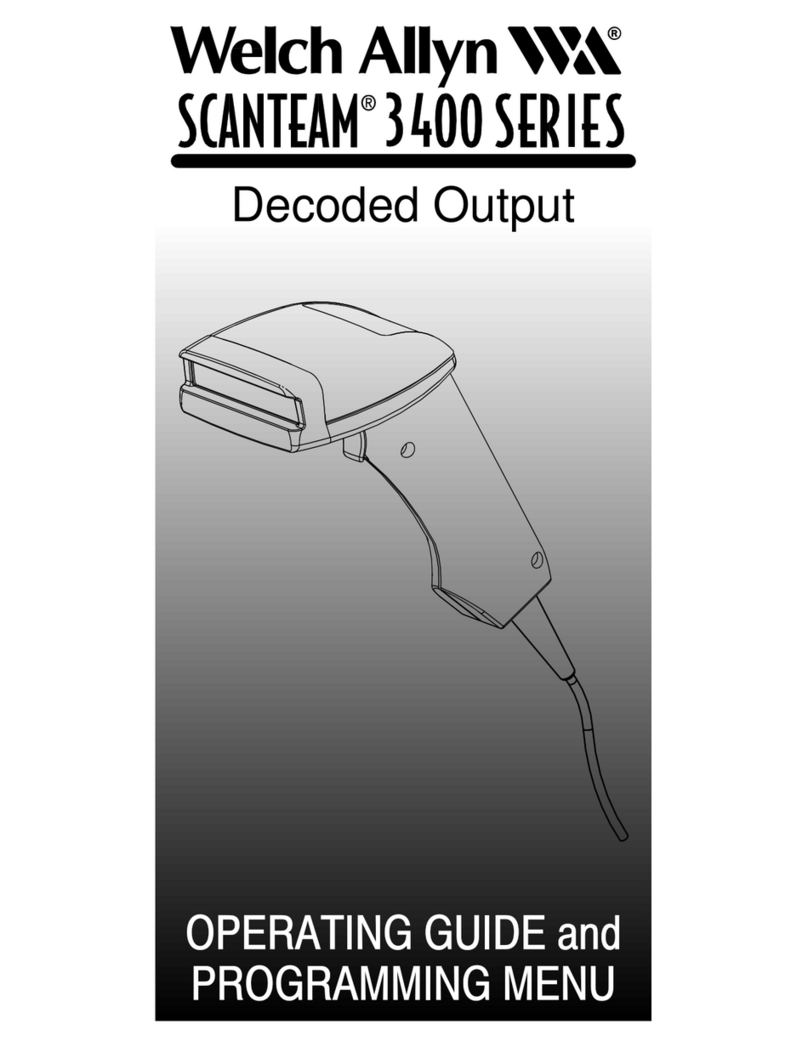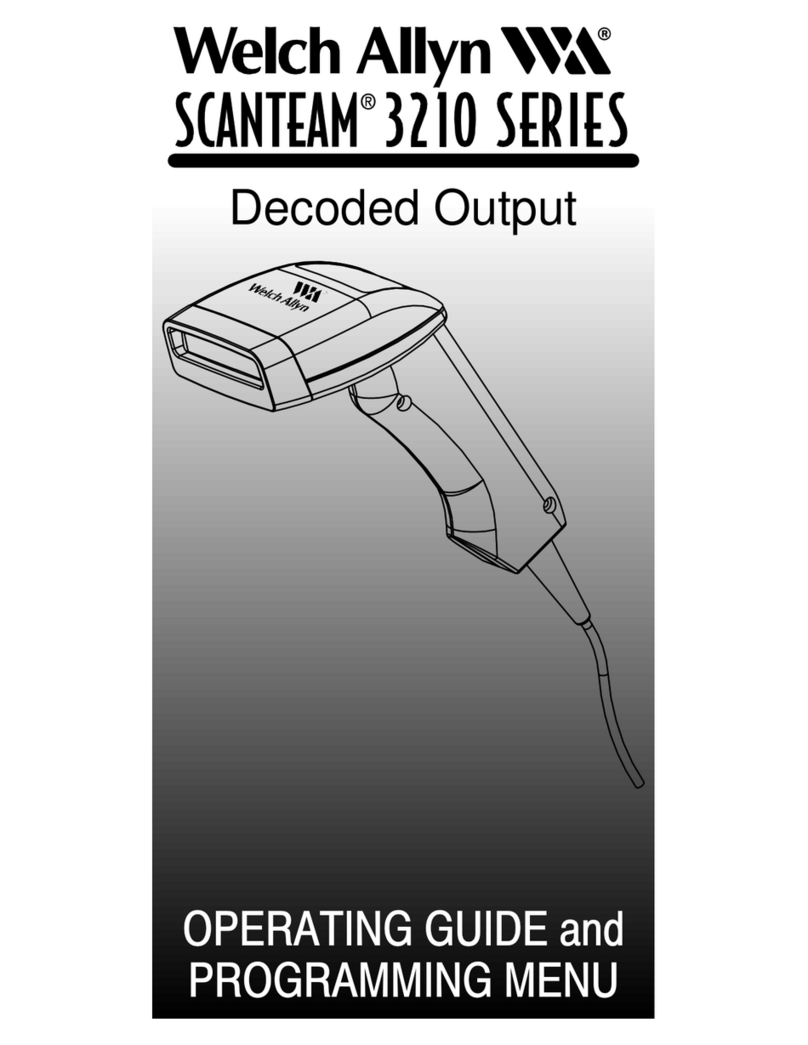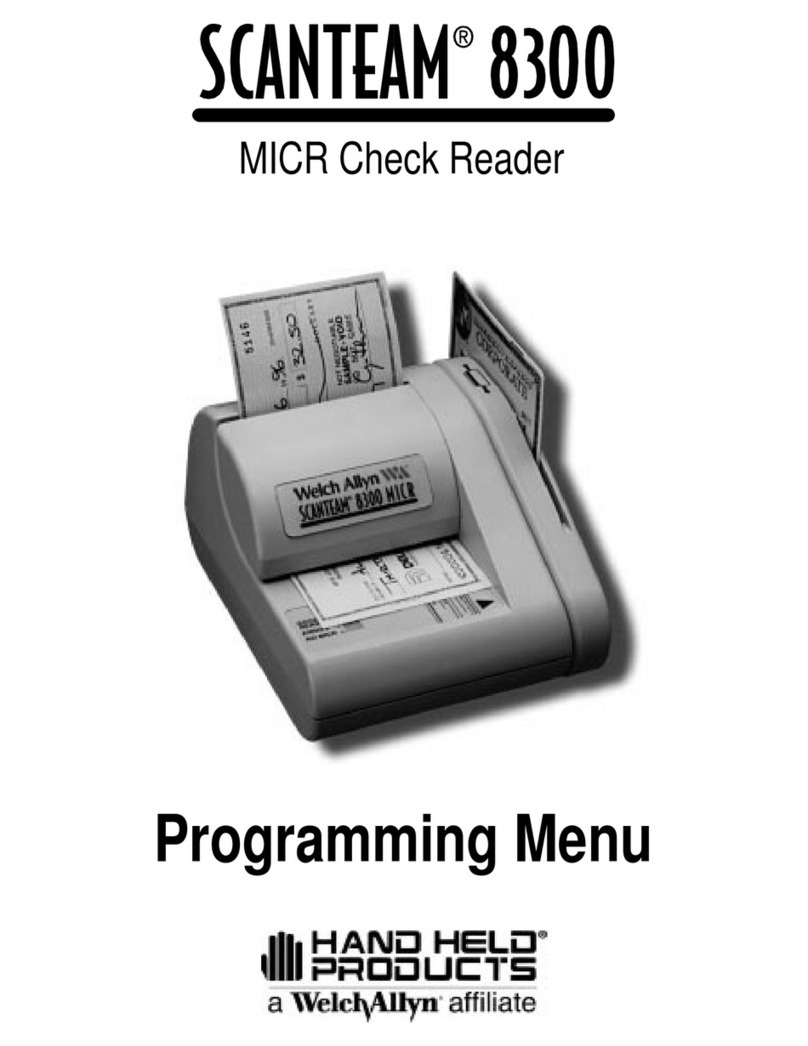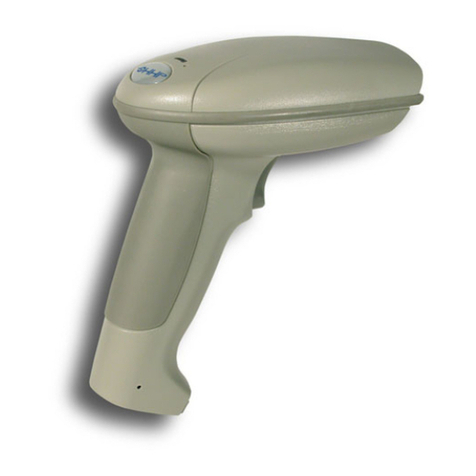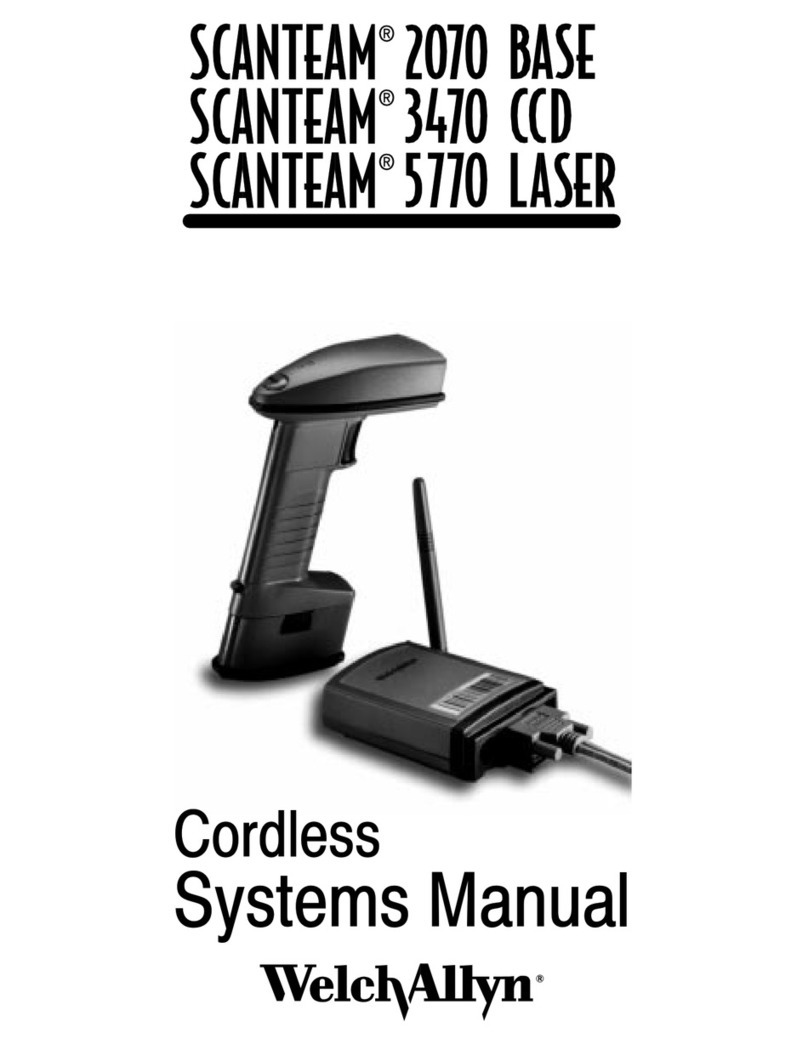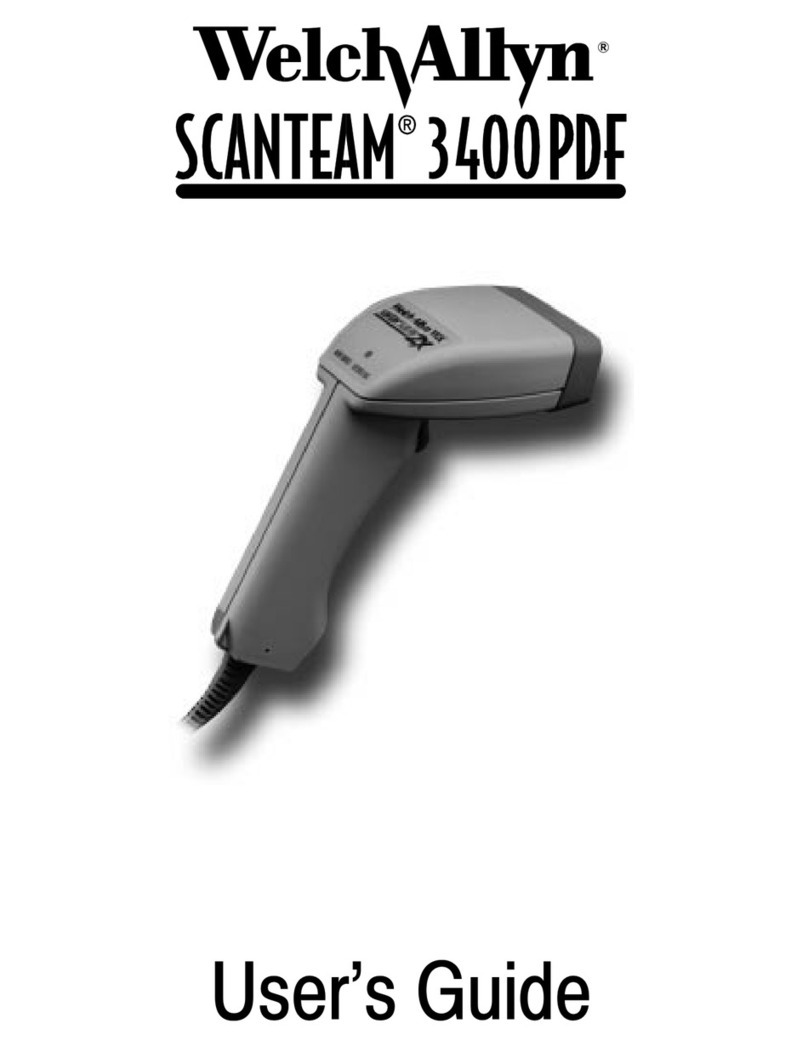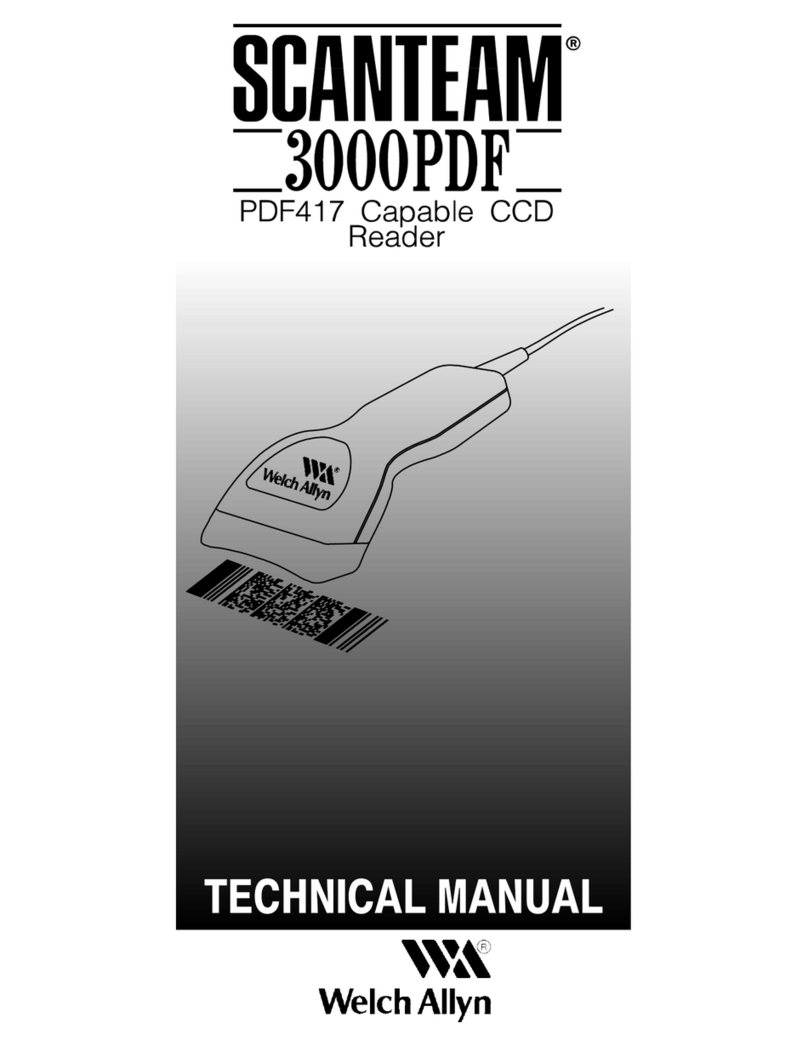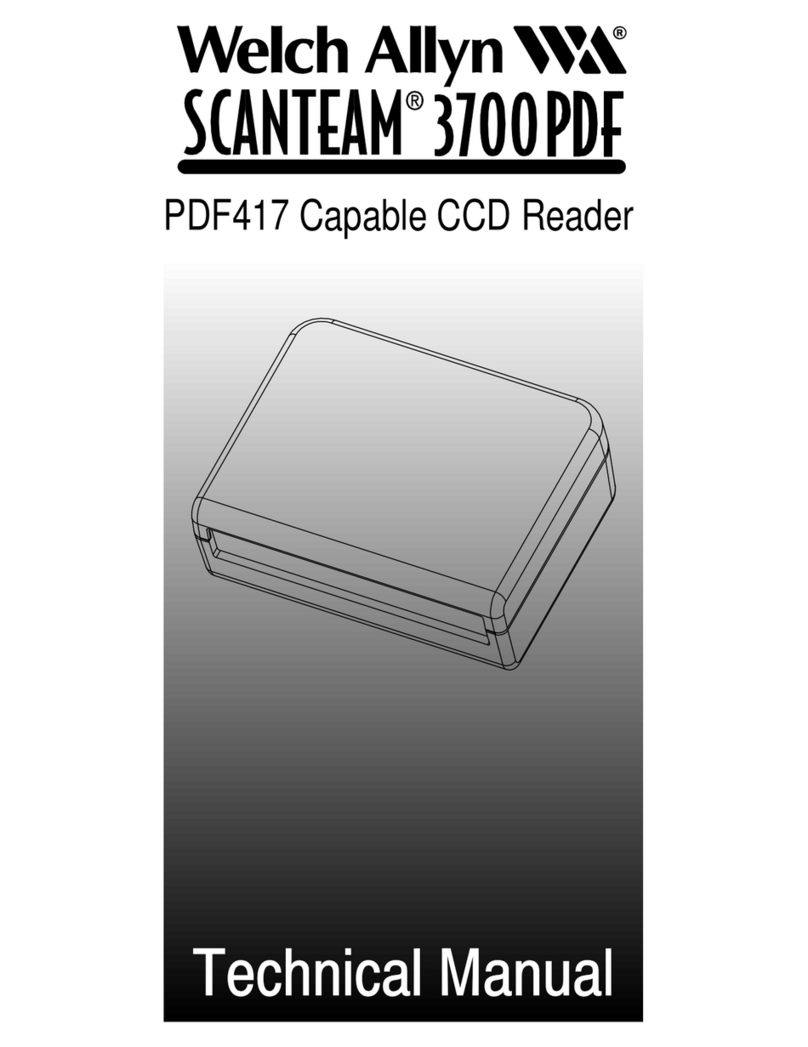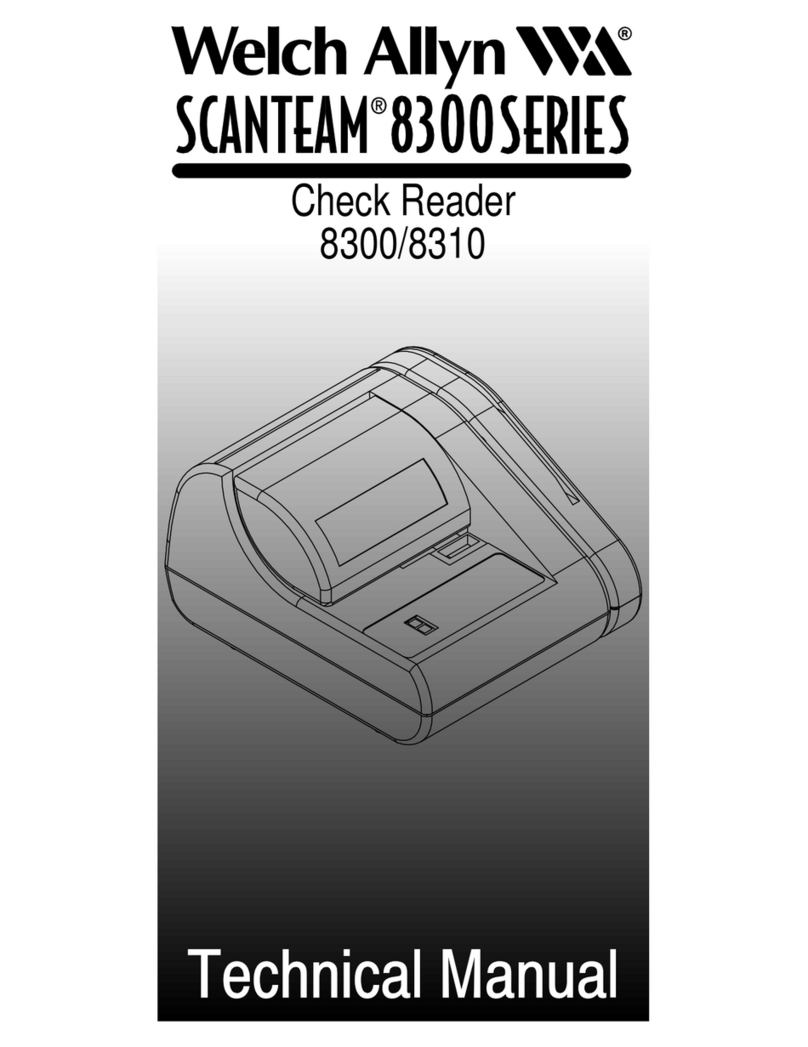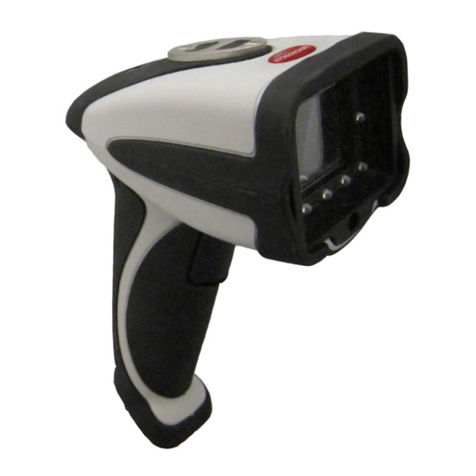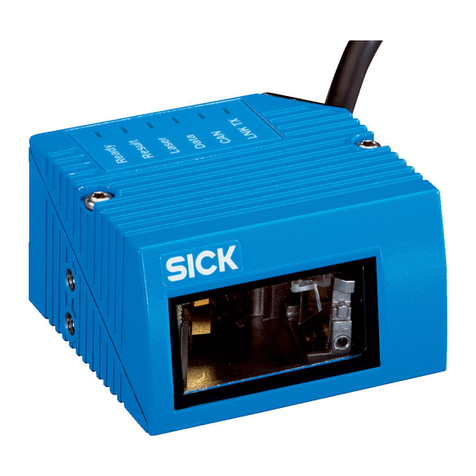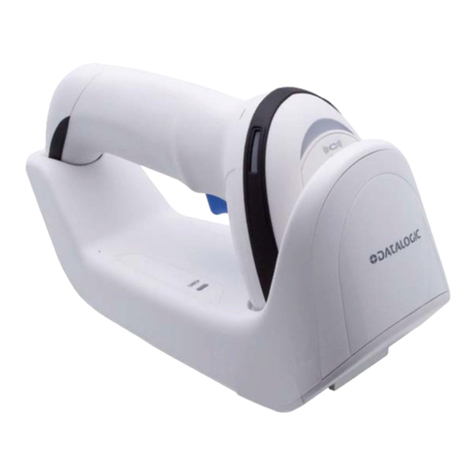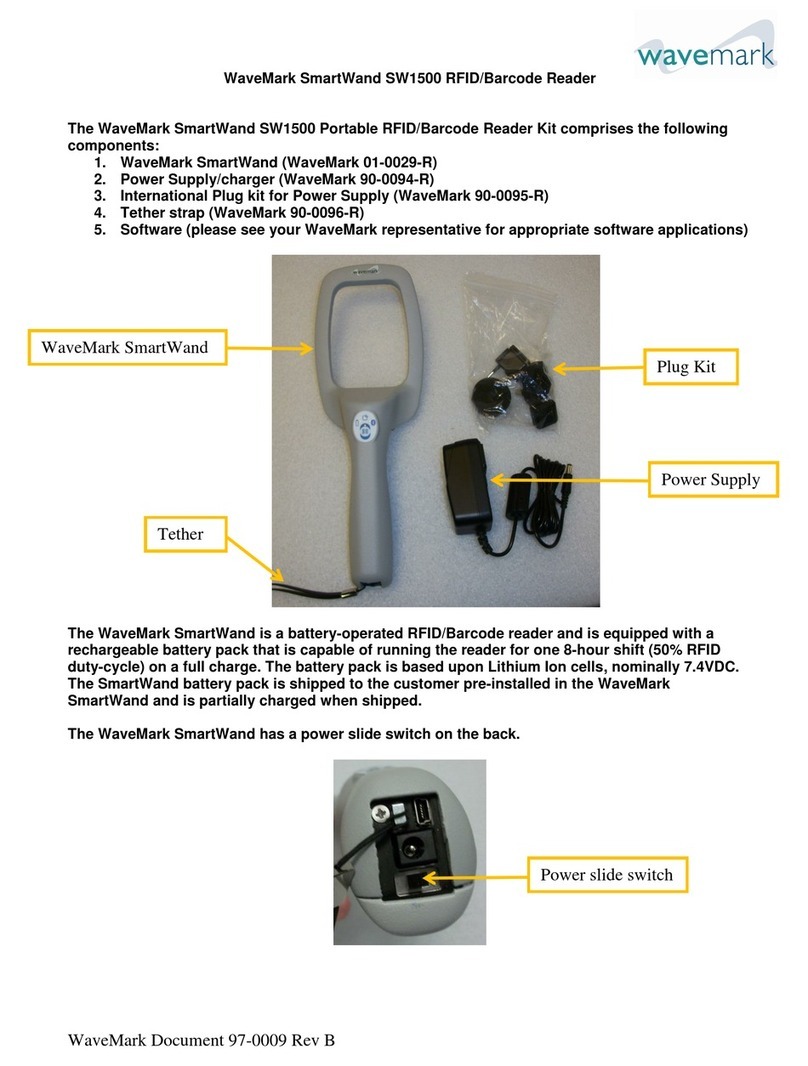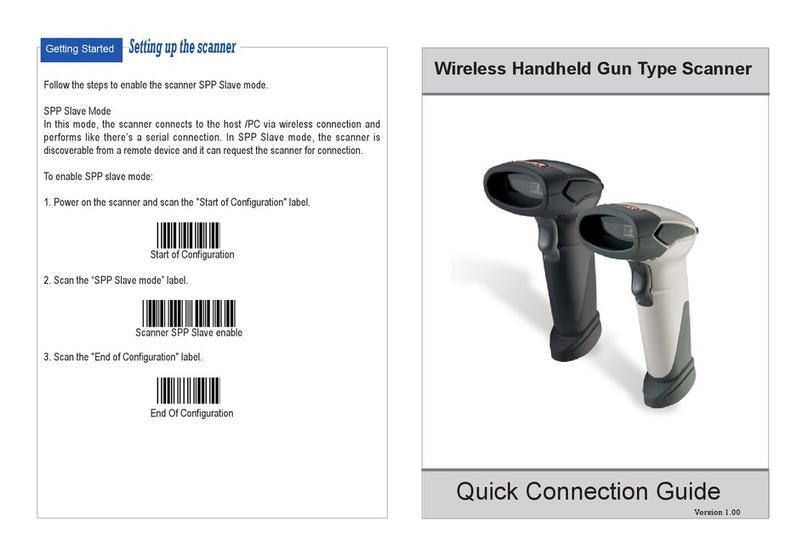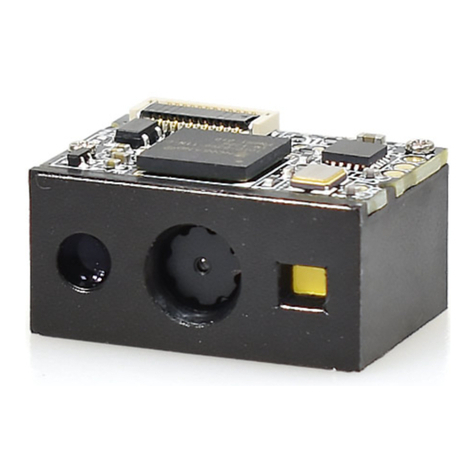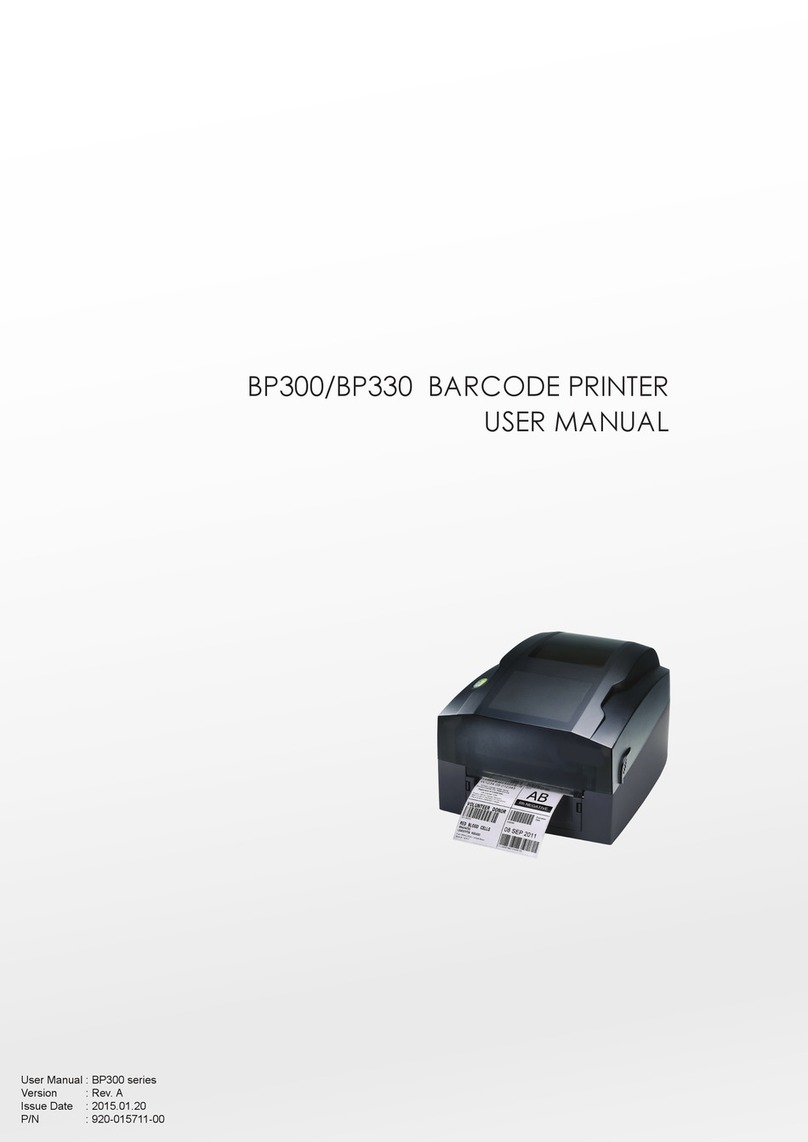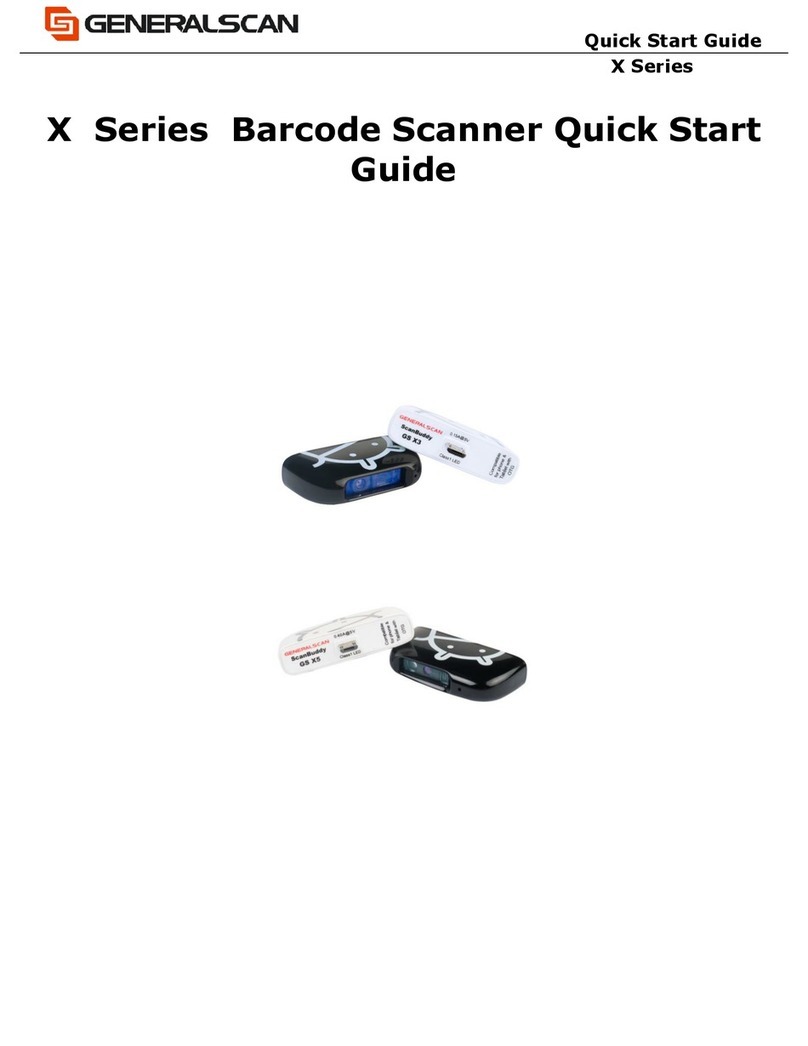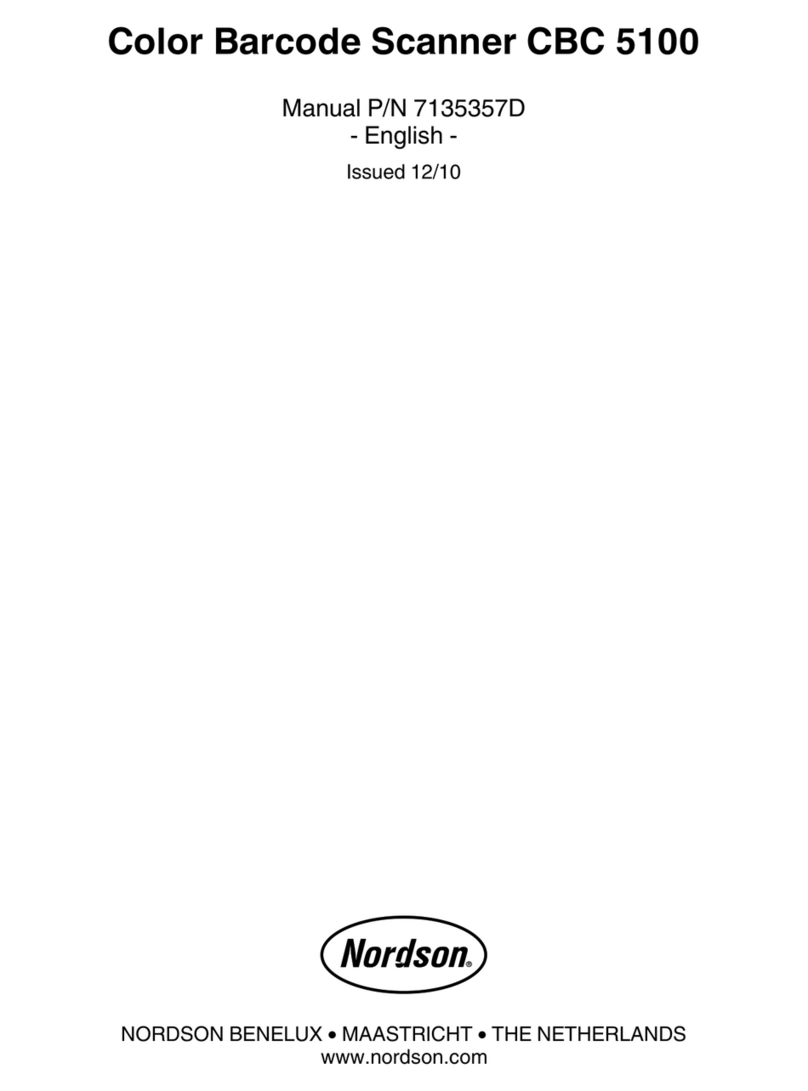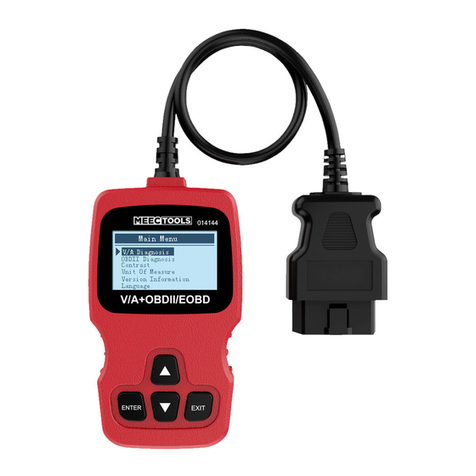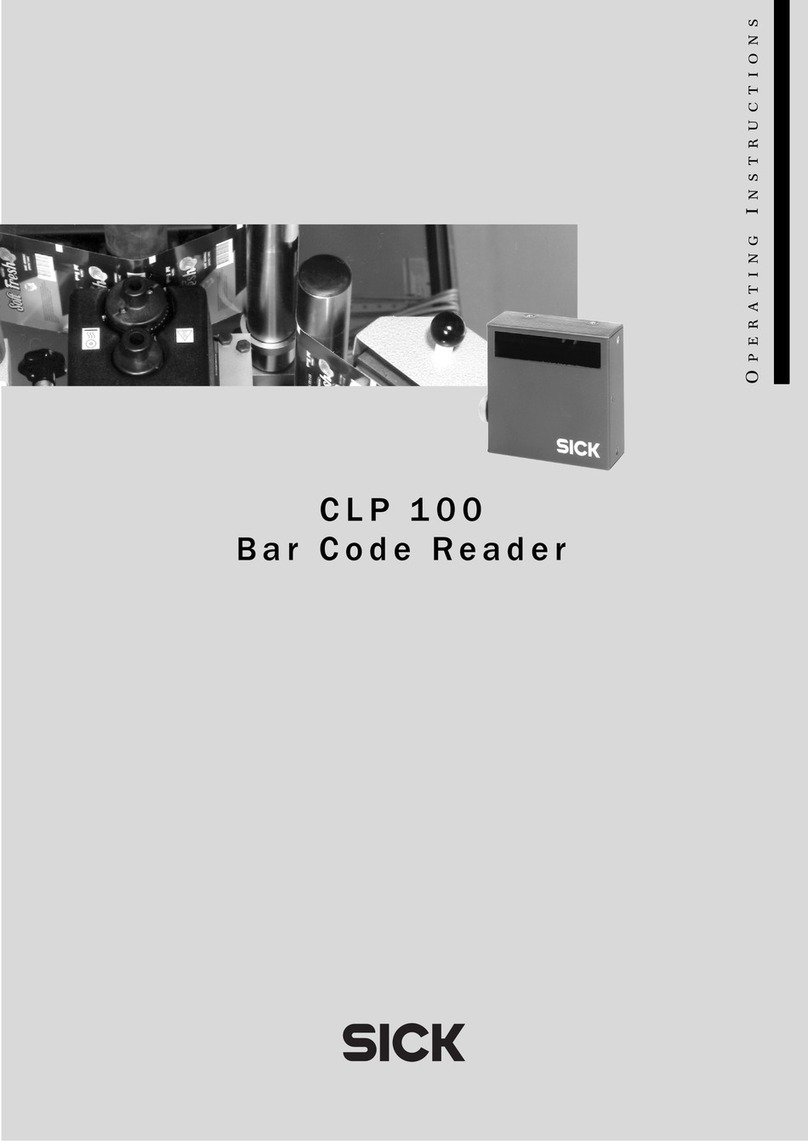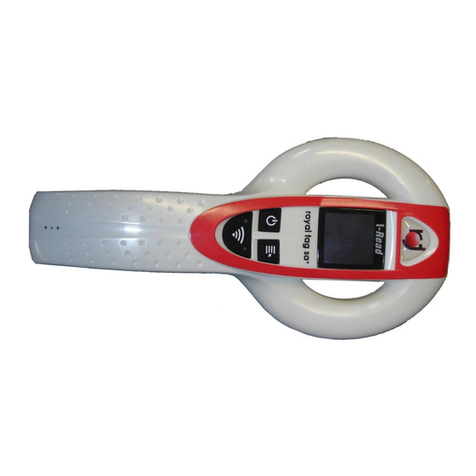
SCANTEAM 3000/PDF Information/Examples
BEEPER
Volume
This programming selection provides control of the reader’s beeper volume. The beeper
volume may be set from low to high in four increments. Default = “2,” medium–high.
4
Beep on Power Up
Whenenabled,thereader willdoublebeep eachtimethe systemisreset. When disabled,
the beeper will not sound whenever the system is reset. Default = enabled (“Yes”).
Beep on Good Read
When enabled, the reader will beep once following a successful decode. When disabled,
the beeper will not sound following the decode. Default = enabled (“Yes”).
Code 16K, Code 49: Click on Row Read
Whenenabled,thereader willclickonce aftereachrow ofaCode 16KorCode49stacked
barcode has been read. When disabled, thebeeper will not sound afterscanning rows of
Code 16K or Code 49 stacked bar code. Default = disabled (“No”).
PDF417: Ticking Indicates Scanning Progress
Whenenabled,thereader willemita tickingsoundas it scansaPDF417 symbol. Therate
of ticking is proportional to the rate of data collection. When disabled, the beeper will not
sound while scanning a PDF417 symbol. Default = disabled (“No”).
PDF417: Humming Indicates Decoder Is Busy
When enabled, the reader will emit a humming sound while it is decoding a PDF417
symbol. When disabled, the beeper will not sound while decoding a PDF417 symbol.
Default = enabled (“Yes”).
What the Beeper is Telling you:
As audible feedback, the PDF Capable reader provides six different beeps:
single beep, double beep, triple beep, click, tick, and hum.
Single Beep One beep signals a successful barcode read.
Double Beep Two beeps in succession indicate either:
•a hardware reset (as when the unit is first powered on)
•ENTER/EXIT/ESCAPE programming mode (when using the
programming menu pages).
Triple Beep Three quick beeps in succession indicate an error condition, as when an
illegalmenucodeisscanned,orwhentheserialinputbufferoverflows. Every
character sent to the PDF Capable reader is stored in a buffer. If the
characters arrive faster than the reader can process them, it is possible
(though rare) that the input buffer will completely fill up, and an overflow
occurs. See Technical Manual for more details.
Click A“Click” hasthe samepitch as a beep, buthas amuch shorterduration. The
click signals a successful row read for stacked codes 16K and 49. This
provides useful feedback when the codes are scanned using a wand. Such
feedback may not be as useful when using PDF Capable readers, sincethey
have been optimized to read stacked codes.
Tick
Hum
The “Tick” has the shortest duration, and no perceivable pitch. It is used to
indicatescanningprogresswhilereading PDF417. Atickisinitiatedforevery
32PDF417codewords read. Ahighrate of tickingcorrespondsto ahighrate
of data collection, thus good printing and good scanning technique are
indicated by a high ticking rate.
Refer to the PDF Technical manual for printing/scanning suggestions. In general,
keepthescanlineofthereaderalignedwiththerowsofthesymbol. Printingsmaller
X–dimensionand larger Y–dimension (row height) aids scanning ability.
The“Hum”isasteadytonewithalowerpitchandvolumethanthebeep,anda
variable duration. The PDF417 reader can’t scan while decoding PDF417.
Whenagreatdealoferrorcorrectionisrequired,thereadermayappeartobe
“locked up.” Humming indicates that the reader is busy decoding. Use the
ticking option for PDF417 to learn how to scan for optimum performance.
Careful scanning greatly decreases PDF417 decoding time.
